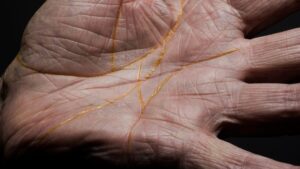Legacy Minerals sampling serves up promising gold-silver anomaly at Black Range

Further work at the new Mt Mylora gold-silver anomaly will help define drill targets. Pic: Getty Images
- Legacy Minerals’ soil sampling defines 650m gold-silver anomaly at Mt Mylora prospect
- Limited, shallow historical drilling has not sufficiently tested the anomalous trend
- Results pending from recently completed regional soil sampling campaign
Special Report: Soil sampling at Legacy Minerals’ Black Range project in New South Wales has defined a strong and coherent gold-silver anomaly at the underexplored Mt Mylora prospect.
Soil sampling that followed on first pass rock chip sampling that had returned up to 1440g/t silver and 1.51g/t gold successfully defined a 650m zone of elevated epithermal gold-silver pathfinder elements.
This included a 200m long gold trend with >10 parts per billion gold (and up to 535ppb gold).
Legacy Minerals (ASX:LGM) adds that the anomaly remains open along strike and to the east.
It has also completed regional soil sampling grids over recently identified geophysical areas of interest to assess the district-scale potential. These include areas with reconnaissance rock chip samples of up to 0.46g/t gold and 47.8g/t silver.
“We are excited to have defined another extensive gold and silver footprint in soil sampling at the Mt Mylora prospect, part of the Black Range project,” managing director Christopher Byrne said.
“The scale and continued identification of widespread anomalism at Black Range demonstrates its discovery potential, and along with other epithermal projects, Bauloora and Drake, the project remains a key focus in the Legacy Minerals’ portfolio.
“Our recent work here at Mt Mylora highlighted significant pathfinder anomalies in association with strongly altered tuffs and gossans and builds on earlier work by the Legacy Minerals team in identifying silver and gold up to 1440g/t Ag and 1.51g/t Au during reconnaissance rock sampling.
“We plan to extend the soil grid and complete an induced polarisation geophysical survey to further advance the prospect towards drill testing.”
Opportunity knocking
Mt Mylora, which was last drilled in 1985, is an underexplored area of the copper and gold-rich Lachlan Fold Belt.
It has only seen limited, shallow drilling with 11 of the 13 historical holes reaching depths of no more than 60m.
This is despite the broader Black Range project sitting within the Central Lachlan Fold Belt, which hosts world-class copper-gold orebodies such as Cadia-Ridgeway and Northparkes.
However, this work still confirmed a wide zone of strong to intense alteration with pyrite mineralisation and targets remaining open at depth.
This limited if promising historical work presents a significant exploration opportunity for the company.
LGM’s soil sampling was completed across 1km2 of the project on a 100m by 50m grid to vector towards potential gold-silver bearing ore shoots in an epithermal mineral system within known mineralised trends for future drill testing and to assess the broader area for previously unrecognised Au-Ag mineralisation.
An additional 104 soil samples were collected from two areas between Mt Mylora and Sugarbag Hill that were recognised as being prospective for gold and silver mineralisation from field work and recent rock chip results.
Further work
The company is currently awaiting assay results from the recently completed regional soil surveys and intends to complete extensions to the Mt Mylora soil survey grid as well as a dipole-dipole induced polarisation survey over the Mt Mylora and Sugarbag Hill prospects.
Anomalous soil results in locations where no historical work has occurred will be followed up by field reconnaissance, mapping and rock chip sampling.
This work will inform LGM’s strategy for drill testing priority epithermal targets in the future.
This article was developed in collaboration with Legacy Minerals, a Stockhead advertiser at the time of publishing.
This article does not constitute financial product advice. You should consider obtaining independent advice before making any financial decisions.
Related Topics

UNLOCK INSIGHTS
Discover the untold stories of emerging ASX stocks.
Daily news and expert analysis, it's free to subscribe.
By proceeding, you confirm you understand that we handle personal information in accordance with our Privacy Policy.








